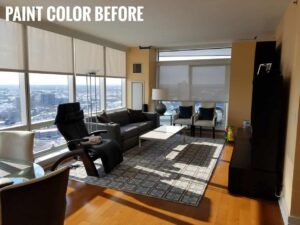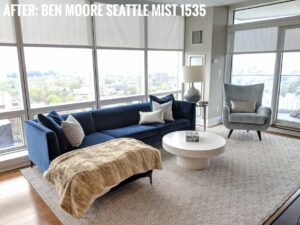July 9, 2019 / by HomeSquare’s in-house designer, Katie Canfield
We’ve all watched those house buying shows on TV. Sometimes you just don’t know why a buyer passes on a perfectly good house. So let’s talk about what to look past when shopping for your next dream home– and important things to focus on.
1. Look Past the Paint
There isn’t a house that has every room painted the colors you want. If the seller hired a stager or did some work to make the house marketable, it’s likely that every room is a shade of grey. While that’s soothing and appealing to the masses, you’ll probably want to imprint your own personality to make the house your home. You need to anticipate that you’ll be painting some walls and account for that in your budget. I highly suggest hiring professionals (like HomeSquare) vs. doing the work yourself. It’ll free you up to do more important things.
2. Wallpaper – You’re Not Stuck with It
You may run i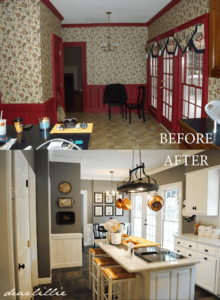 nto outdated floral prints that need to be taken down. This can be handled very quickly by a professional wallpaper installer. I’m a huge fan of wallpaper and would suggest taking the opportunity to select a new paper that represents you and have the wallpaper installer handle it all in one job. Textured wallpapers such as grasscloths, paperweaves (or other fibers) can add a beautiful sensibility to your walls. They also provide texture, warmth and subtle variation of color you otherwise wouldn’t have with a wall paint. If the house you’re looking at has good bones and the right layout, wallpaper should never be something to deter you!
nto outdated floral prints that need to be taken down. This can be handled very quickly by a professional wallpaper installer. I’m a huge fan of wallpaper and would suggest taking the opportunity to select a new paper that represents you and have the wallpaper installer handle it all in one job. Textured wallpapers such as grasscloths, paperweaves (or other fibers) can add a beautiful sensibility to your walls. They also provide texture, warmth and subtle variation of color you otherwise wouldn’t have with a wall paint. If the house you’re looking at has good bones and the right layout, wallpaper should never be something to deter you!
3. Light It Up!
A great way to update a home or make it feel more like “you” is to replace the lighting. A new dining room or entrychandelier. Spice up the exterior light fixtures, or flush mounts in hallways.
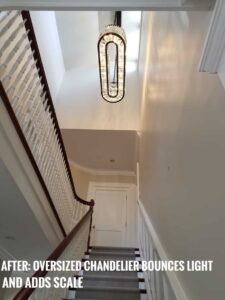
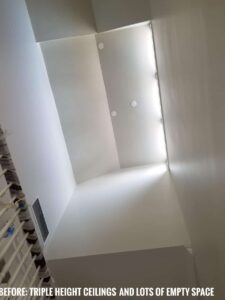 Punch things up with the light fixtures to add a new vibe and you can evenimprove the light output and quality with LED fixtures that are more efficient for your electricity bill. To do this most efficiently, select and order all your fixtures and then schedule the electrician. They’ll give you a better deal if you give them a full day’s work rather than making multiple trips. Have them come to do a walk thru and quote with the specifications of the fixtures you plan on buying handy. They will be able to alert you to any unforeseen trouble, like: incorrectly placed or sized junction boxes, holes they may need to put in the walls to run lines, or adding support for oversized fixtures or ceiling fans.
Punch things up with the light fixtures to add a new vibe and you can evenimprove the light output and quality with LED fixtures that are more efficient for your electricity bill. To do this most efficiently, select and order all your fixtures and then schedule the electrician. They’ll give you a better deal if you give them a full day’s work rather than making multiple trips. Have them come to do a walk thru and quote with the specifications of the fixtures you plan on buying handy. They will be able to alert you to any unforeseen trouble, like: incorrectly placed or sized junction boxes, holes they may need to put in the walls to run lines, or adding support for oversized fixtures or ceiling fans.
4. Change Up the “Jewelry”
Simple touches like hardware can make a huge impact. They can make or break a space. Updating cabinetry hardware, door knobs or faucets can take your space from drab to fab. In most cases this is a relatively inexpensive fix that can be done by anyone with a screw driver.
In an older home consider adding some charm and whimsy with eclectic hardware or glass knobs. Below are some of my favorite decorative hardware collections:
- Anthropology is a great source for an eclectic feel
- I love this Etsy shop for some glam lucite hardware. Etsy is a great source to find that something special, from luxury to rustic. And supporting a small business makes me feel good.
- The “Firenze” collection from Belwith Keeler is a little bit deco and edgy at the same time. These are stunning for a bathroom with a mix of white or black marble with brass or black details
- Another collection I’ve been crushing on from Belwith Keeler is the “Fuse” line. I’m a sucker for dark wood and metal.
5. Focus on the Bones
Most importantly, you need to take a close look at the house’s structural parts. Here are the questions you need to ask:
- Does it need a lot of repairs to mechanical systems?
- When will you need to replace the roof?
- Are the windows in good shape for efficient heating and cooling?
- Does the basement leak?
- If there’s a pool – is it in good condition?
- What will your monthly maintenance costs look like to keep up with landscaping, snow removal etc?
- What is the state of the appliances?
- Will you need to update everything in laundry or kitchen? If yes, can they just be swapped out or would you renovate the entire space?
- How do you envision using the layout of the space?
- Does it have room for guests if you like entertaining?
- What will the holidays look like…or Sunday dinner?
- Do you have a little bit of room to grow, or only just enough space?
- Are there any changes you would make or walls you would knock down to connect spaces?
- Do you have enough bathrooms?
- Is there a powder room or bathroom on the main floor for guests?
- Is there enough storage space?
- Think about all the things you would need to store. A pantry for dry goods, somewhere to keep everyday essentials like paper towels and toilet paper on hand.
- Is there room for everyone’s coats, kids sports equipment, cleaning supplies like vacuums, mops and brooms?
- Storage space for kids toys, spare linens, and books?
- Is there ample clothing and shoe closets in the bedroom?
- Do you have a space for “deep storage” such as holiday decorations, etc?
Remember that any house is just a building. To make it a home you have to make it yours. It’s very unlikely you’ll find a house that fits you without changing a thing. Taking time to decorate and personalize a house can be a bonding experience and help you and your family plant roots and form a connection with home sweet home.
[divider style=”single” border=”small”]
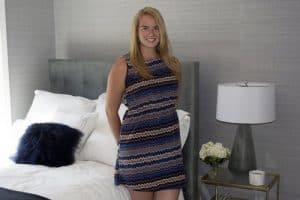
Katie Canfield is the founder and principal designer at Studio KC. Studio KC got its humble start in 2015 when Katie was just 23 years old. While she was freelancing with other interior designers in the NY and CT area she also became a go-to designer for local contractors and trades that needed a designer’s help for their clients whether it be for custom cabinetry drawings or plans for a gut renovation on an entire home.
Katie Canfield’s design aesthetic is eclectic and flexible. She delights in the marriage between old and new- keeping spaces approachable but still matching each client’s unique aesthetic and family narrative. Her passion for design keeps her motivated and constantly on the hunt for new trends and materials. Her broad experience includes an art history background, study at the Accademia Italiana in Florence, a stint with the renowned Manhattan firm Amanda Nisbet Design, as well as collaborations with builders and designers across the tri-state area. She’s seen it all: from gutting prewar Manhattan apartments to new construction in the ‘burbs.
